-
 Bitcoin
Bitcoin $110,048.0067
3.72% -
 Ethereum
Ethereum $2,659.7538
5.33% -
 Tether USDt
Tether USDt $1.0006
0.00% -
 XRP
XRP $2.3235
2.27% -
 BNB
BNB $666.9893
1.95% -
 Solana
Solana $159.4889
3.45% -
 USDC
USDC $1.0000
0.00% -
 Dogecoin
Dogecoin $0.1943
5.00% -
 TRON
TRON $0.2895
2.71% -
 Cardano
Cardano $0.7011
4.30% -
 Hyperliquid
Hyperliquid $38.5136
8.05% -
 Sui
Sui $3.4384
5.79% -
 Chainlink
Chainlink $14.3284
3.26% -
 Avalanche
Avalanche $21.8795
2.83% -
 Stellar
Stellar $0.2737
2.08% -
 Bitcoin Cash
Bitcoin Cash $428.1448
3.42% -
 UNUS SED LEO
UNUS SED LEO $9.0187
-1.94% -
 Toncoin
Toncoin $3.3188
4.03% -
 Shiba Inu
Shiba Inu $0.0...01297
2.84% -
 Hedera
Hedera $0.1784
4.87% -
 Litecoin
Litecoin $90.0331
2.46% -
 Polkadot
Polkadot $4.1383
2.42% -
 Monero
Monero $331.1164
-0.36% -
 Ethena USDe
Ethena USDe $1.0009
-0.01% -
 Bitget Token
Bitget Token $4.7578
2.03% -
 Dai
Dai $0.9999
0.01% -
 Pepe
Pepe $0.0...01247
5.20% -
 Pi
Pi $0.6354
0.42% -
 Uniswap
Uniswap $6.8088
7.23% -
 Aave
Aave $278.3593
8.90%
How to detect MACD histogram divergence in advance?
Detecting MACD histogram divergence in advance is crucial for crypto traders to predict trend reversals or continuations using technical analysis.
Jun 09, 2025 at 09:36 pm
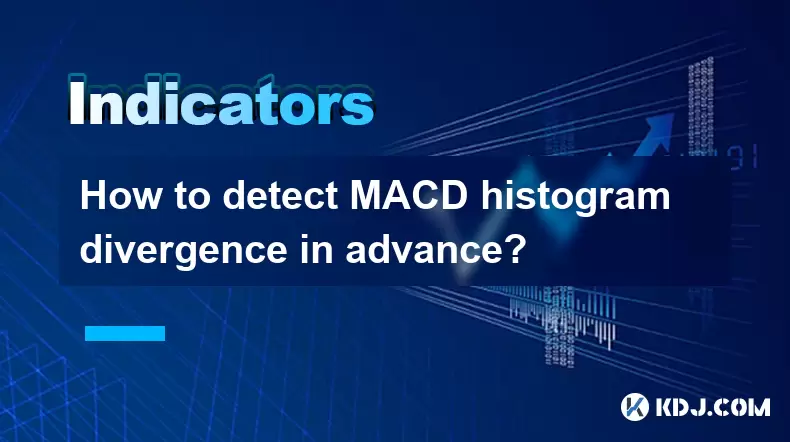
Detecting MACD histogram divergence in advance is a crucial skill for traders in the cryptocurrency market, as it can signal potential trend reversals or continuations. The Moving Average Convergence Divergence (MACD) histogram is a popular technical indicator that helps traders identify momentum changes. By understanding and applying the concept of divergence, traders can gain an edge in predicting market movements. This article will guide you through the process of detecting MACD histogram divergence in advance, providing detailed insights and practical steps.
Understanding MACD and Histogram Divergence
The MACD is calculated by subtracting the 26-period Exponential Moving Average (EMA) from the 12-period EMA. The result is then plotted on a chart, and a 9-period EMA of this difference, known as the signal line, is also plotted. The MACD histogram represents the difference between the MACD line and the signal line, visually displaying the momentum of the price movement.
Divergence occurs when the price of an asset moves in the opposite direction of a technical indicator, such as the MACD histogram. There are two main types of divergence: bullish and bearish. Bullish divergence happens when the price forms lower lows while the MACD histogram forms higher lows, indicating a potential upward reversal. Conversely, bearish divergence occurs when the price forms higher highs while the MACD histogram forms lower highs, suggesting a potential downward reversal.
Identifying Bullish Divergence
To detect bullish divergence in advance, follow these steps:
- Monitor the price chart: Look for a series of lower lows in the price action. This indicates a downtrend that may be losing momentum.
- Observe the MACD histogram: Simultaneously, check the MACD histogram for higher lows. This suggests that the bearish momentum is weakening.
- Confirm the divergence: Once you identify lower lows in the price and higher lows in the MACD histogram, you can confirm the presence of bullish divergence.
- Watch for a bullish signal: After confirming the divergence, wait for a bullish signal, such as a bullish candlestick pattern or a break above a resistance level, to enter a long position.
Identifying Bearish Divergence
To detect bearish divergence in advance, follow these steps:
- Monitor the price chart: Look for a series of higher highs in the price action. This indicates an uptrend that may be losing momentum.
- Observe the MACD histogram: Simultaneously, check the MACD histogram for lower highs. This suggests that the bullish momentum is weakening.
- Confirm the divergence: Once you identify higher highs in the price and lower highs in the MACD histogram, you can confirm the presence of bearish divergence.
- Watch for a bearish signal: After confirming the divergence, wait for a bearish signal, such as a bearish candlestick pattern or a break below a support level, to enter a short position.
Using Additional Indicators for Confirmation
While the MACD histogram divergence can provide valuable insights, it is beneficial to use additional indicators to confirm the signals. Some popular indicators that can be used in conjunction with MACD histogram divergence include:
- Relative Strength Index (RSI): The RSI can help identify overbought or oversold conditions, which can support the divergence signals.
- Stochastic Oscillator: This momentum indicator can also be used to confirm divergence signals by showing overbought or oversold conditions.
- Volume: Analyzing trading volume can provide additional confirmation of the strength of a divergence signal. An increase in volume during a divergence can indicate a more significant potential reversal.
Practical Example of Detecting MACD Histogram Divergence
To illustrate the process of detecting MACD histogram divergence in advance, let's consider a hypothetical example using Bitcoin (BTC) price data.
- Step 1: Open a trading platform or charting tool that supports cryptocurrency trading and technical analysis, such as TradingView or MetaTrader.
- Step 2: Select the Bitcoin (BTC) price chart and apply the MACD indicator with default settings (12, 26, 9).
- Step 3: Identify a downtrend in the price chart, where the price forms a series of lower lows.
- Step 4: Observe the MACD histogram and look for higher lows during the same period as the price's lower lows.
- Step 5: Confirm the bullish divergence by noting the discrepancy between the price and the MACD histogram.
- Step 6: Monitor the price action for a bullish signal, such as a bullish engulfing candlestick pattern or a break above a resistance level.
- Step 7: If the bullish signal is confirmed, consider entering a long position on Bitcoin, with appropriate risk management measures in place.
Common Mistakes to Avoid
When detecting MACD histogram divergence in advance, it is essential to avoid common pitfalls that can lead to incorrect interpretations and trading decisions. Some common mistakes include:
- Ignoring the overall trend: Divergence signals are more reliable when they occur in the context of the broader market trend. Always consider the prevailing trend before acting on a divergence signal.
- Over-relying on divergence: Divergence is just one tool among many in a trader's toolkit. Do not rely solely on divergence signals without confirming them with other indicators or price action.
- Failing to manage risk: Always use proper risk management techniques, such as setting stop-loss orders and position sizing, to protect your capital when trading based on divergence signals.
FAQs
Q1: Can MACD histogram divergence be used on all timeframes?
Yes, MACD histogram divergence can be applied to various timeframes, from short-term intraday charts to longer-term daily or weekly charts. However, the effectiveness of divergence signals may vary depending on the timeframe and market conditions.
Q2: How can I improve the accuracy of my MACD histogram divergence signals?
To improve the accuracy of MACD histogram divergence signals, consider using multiple timeframes, confirming signals with other indicators, and backtesting your strategy on historical data. Additionally, staying updated with market news and events can help you interpret divergence signals more effectively.
Q3: Is it possible to automate the detection of MACD histogram divergence?
Yes, it is possible to automate the detection of MACD histogram divergence using trading algorithms and custom indicators. Many trading platforms and programming languages, such as Python or MQL4, offer tools to develop and implement automated divergence detection strategies.
Q4: How often should I check for MACD histogram divergence?
The frequency of checking for MACD histogram divergence depends on your trading style and timeframe. For short-term traders, checking for divergence signals multiple times a day may be necessary, while longer-term traders might check less frequently, such as daily or weekly.
Disclaimer:info@kdj.com
The information provided is not trading advice. kdj.com does not assume any responsibility for any investments made based on the information provided in this article. Cryptocurrencies are highly volatile and it is highly recommended that you invest with caution after thorough research!
If you believe that the content used on this website infringes your copyright, please contact us immediately (info@kdj.com) and we will delete it promptly.
- Veteran analyst and The Big Bitcoin Book author Fred Krueger is bullish on MicroStrategy
- 2025-06-10 05:55:12
- Goldman Sachs Plans to Increase Its Crypto Activities
- 2025-06-10 05:55:12
- Bitcoin Is Ending Closer to the $100,000 Mark Once Again
- 2025-06-10 05:50:14
- Bitcoin Solaris (BTC-S) — Mining Crypto Has Never Been Easier
- 2025-06-10 05:50:14
- President Trump's turnaround on cryptocurrencies is moving them more into the mainstream
- 2025-06-10 05:45:13
- Bitcoin Bulls Are Back in Control as BTC Price Soars Past $97,000, Here Are the 3 Best Meme Coins to Buy the Dip
- 2025-06-10 05:45:13
Related knowledge
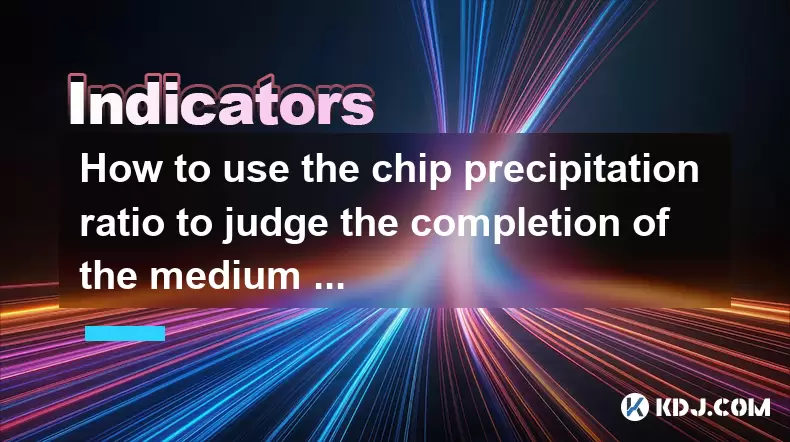
How to use the chip precipitation ratio to judge the completion of the medium and long-term bottom construction?
Jun 04,2025 at 03:36am
The chip precipitation ratio is a crucial metric used by investors to assess the accumulation of chips (or shares) at different price levels over time. This ratio helps in understanding the distribution of chips and can be a powerful tool for determining the completion of medium and long-term bottom construction in the cryptocurrency market. By analyzin...
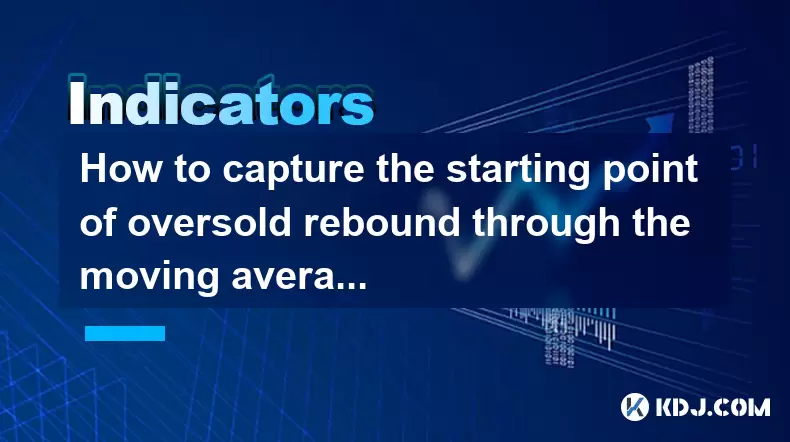
How to capture the starting point of oversold rebound through the moving average gravity reversal strategy?
Jun 04,2025 at 01:01pm
The moving average gravity reversal strategy is a sophisticated approach used by traders to identify potential entry points for buying cryptocurrencies when they are considered oversold. This strategy leverages the concept of moving averages to pinpoint moments when a cryptocurrency might be poised for a rebound. In this article, we will delve into the ...
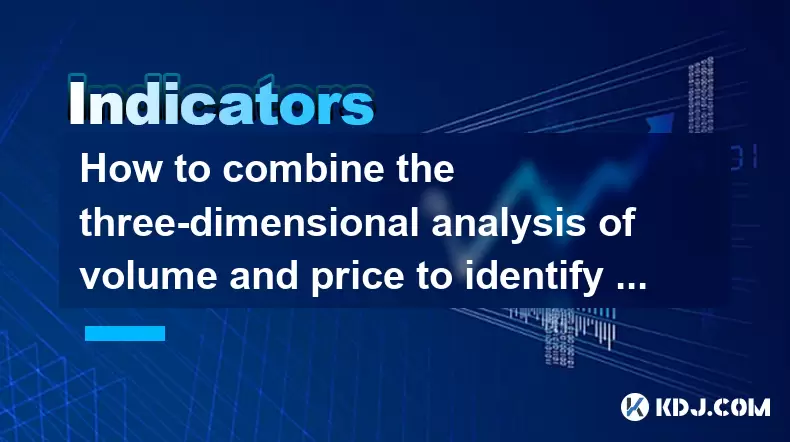
How to combine the three-dimensional analysis of volume and price to identify the golden buying point of breakthrough and retracement?
Jun 03,2025 at 11:42pm
In the dynamic world of cryptocurrencies, identifying the optimal buying points is crucial for maximizing profits and minimizing risks. One effective method to achieve this is by combining three-dimensional analysis of volume and price to pinpoint the golden buying points during breakouts and retracements. This article will delve into how to use this ap...
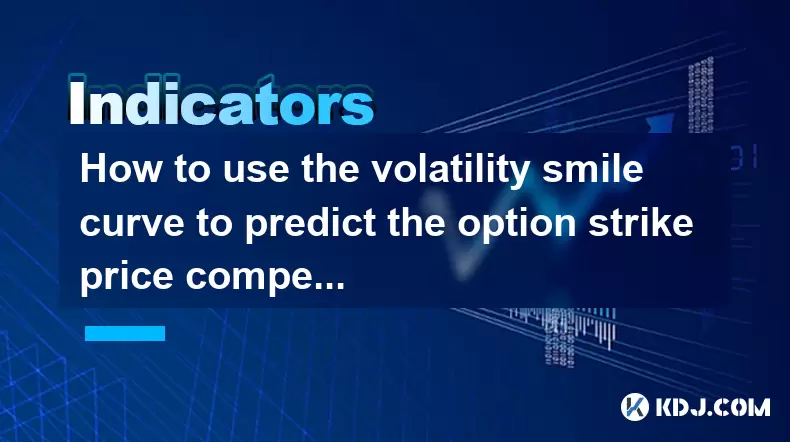
How to use the volatility smile curve to predict the option strike price competition area?
Jun 06,2025 at 01:01pm
The volatility smile curve is a graphical representation that shows the implied volatility of options across different strike prices for a given expiration date. It is called a 'smile' because the curve often takes the shape of a smile, with higher implied volatilities for options that are deep in-the-money or deep out-of-the-money, and lower implied vo...
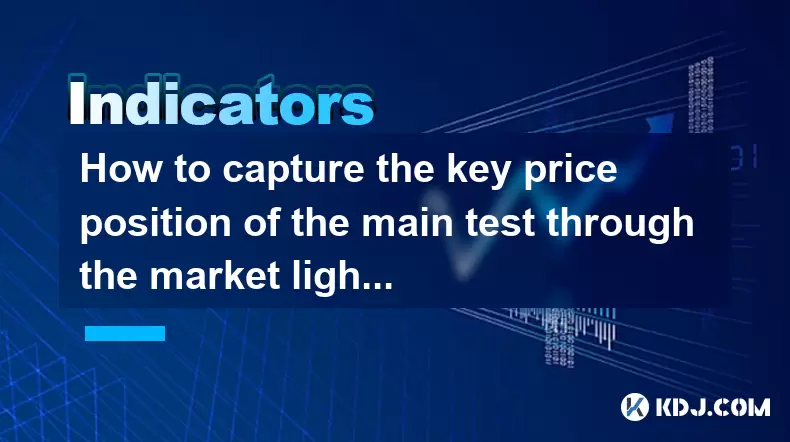
How to capture the key price position of the main test through the market lightning chart?
Jun 02,2025 at 06:07pm
Introduction to Market Lightning ChartThe market lightning chart is a powerful tool used by cryptocurrency traders to visualize price movements and identify key price positions. This chart type provides a detailed view of market activity, allowing traders to spot trends, reversals, and other significant price levels quickly. By understanding how to use ...
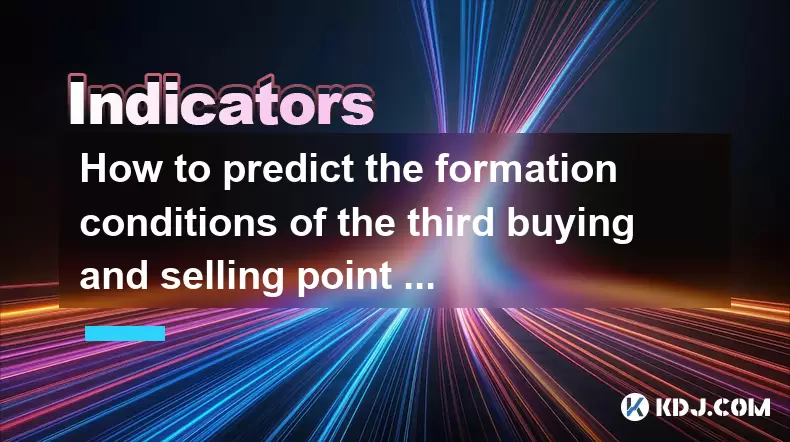
How to predict the formation conditions of the third buying and selling point in combination with the extension of the central axis of the Chaos Theory?
Jun 08,2025 at 12:42am
The concept of predicting the formation conditions of the third buying and selling point in the cryptocurrency market by combining the extension of the central axis of the Chaos Theory is an advanced analytical technique. This method involves understanding the chaotic nature of price movements and using it to identify key moments for trading. In this ar...

How to use the chip precipitation ratio to judge the completion of the medium and long-term bottom construction?
Jun 04,2025 at 03:36am
The chip precipitation ratio is a crucial metric used by investors to assess the accumulation of chips (or shares) at different price levels over time. This ratio helps in understanding the distribution of chips and can be a powerful tool for determining the completion of medium and long-term bottom construction in the cryptocurrency market. By analyzin...

How to capture the starting point of oversold rebound through the moving average gravity reversal strategy?
Jun 04,2025 at 01:01pm
The moving average gravity reversal strategy is a sophisticated approach used by traders to identify potential entry points for buying cryptocurrencies when they are considered oversold. This strategy leverages the concept of moving averages to pinpoint moments when a cryptocurrency might be poised for a rebound. In this article, we will delve into the ...

How to combine the three-dimensional analysis of volume and price to identify the golden buying point of breakthrough and retracement?
Jun 03,2025 at 11:42pm
In the dynamic world of cryptocurrencies, identifying the optimal buying points is crucial for maximizing profits and minimizing risks. One effective method to achieve this is by combining three-dimensional analysis of volume and price to pinpoint the golden buying points during breakouts and retracements. This article will delve into how to use this ap...

How to use the volatility smile curve to predict the option strike price competition area?
Jun 06,2025 at 01:01pm
The volatility smile curve is a graphical representation that shows the implied volatility of options across different strike prices for a given expiration date. It is called a 'smile' because the curve often takes the shape of a smile, with higher implied volatilities for options that are deep in-the-money or deep out-of-the-money, and lower implied vo...

How to capture the key price position of the main test through the market lightning chart?
Jun 02,2025 at 06:07pm
Introduction to Market Lightning ChartThe market lightning chart is a powerful tool used by cryptocurrency traders to visualize price movements and identify key price positions. This chart type provides a detailed view of market activity, allowing traders to spot trends, reversals, and other significant price levels quickly. By understanding how to use ...

How to predict the formation conditions of the third buying and selling point in combination with the extension of the central axis of the Chaos Theory?
Jun 08,2025 at 12:42am
The concept of predicting the formation conditions of the third buying and selling point in the cryptocurrency market by combining the extension of the central axis of the Chaos Theory is an advanced analytical technique. This method involves understanding the chaotic nature of price movements and using it to identify key moments for trading. In this ar...
See all articles

























































































